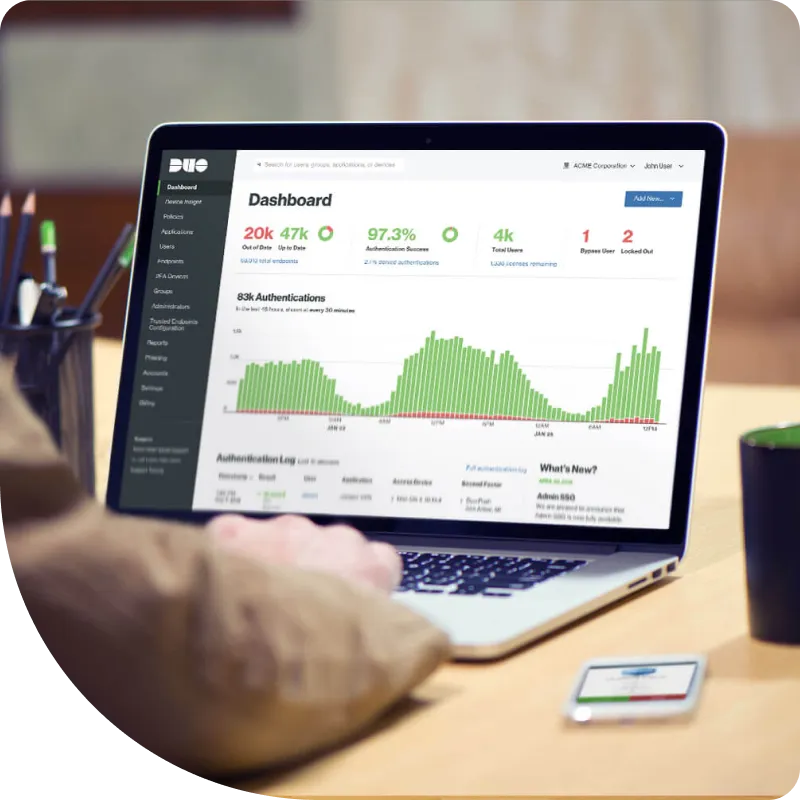$3.4M
Annual savings in employee productivity1
$500K
Annual savings in IT helpdesk support costs2
86K
Potential compromises averted per month3

Moving to a zero trust model is an opportunity to move into a much better user workflow. Plus, when the geopolitics brought us new problems, zero trust from Duo was something that we were able to leverage in order to match the risks that we saw with the appropriate security controls.
Watch the zero trust video (4:33)Brad Arkin
Former SVP, Chief Security and Trust Officer, Cisco

Featured resources for zero trust
RESOURCES
Learn how Duo can keep your organization safe from identity-based attacks and boost workforce productivity
ARTICLE
Zero trust security from Cisco: Frustrate attackers, not users
ARTICLE
The Cisco Security Outcomes study: How organizations achieve outcomes using zero trust security
ARTICLE
A guide on the various Zero Trust Frameworks and their relationship to the Cisco Zero Trust Framework
Frequently asked questions
-
What is zero trust?
Zero trust is a strategy for securing your business by eliminating excessive trust and continually verifying trust – of a user, device, application, or network – before access is granted. By never assuming trust, always verifying it, and applying least privilege to each access control decision, organizations can reduce risk systematically.
-
What are the principles of a zero trust architecture?
-
What are the functional requirements of a zero trust platform?
-
Where are zero trust policies enforced?
-
What are some examples of zero trust in action?


